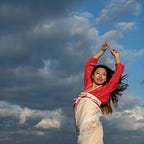Three Major Narratives Behind the Contemporary Chinese Art
The name everybody thinks about when speaking of Contemporary Chinese Art is Ai Wei Wei. He and his sunflower seeds, and the grand installments made of individual units has always been the center of the Chinese art topic, whereas his political struggle and rebellion adds more spices to his art.
On the other hand, an increasing number of Chinese artists have stepped onto the global stage in the past few decades. Although China is still frequently known as the communist country with oppression and somewhat of a xenophobia, its art scene has never stopped growing.
In this day and age, art is always closely related to social issues and political turmoils.
When it comes to Chinese society, things get a bit more complicated.
So I’d like to introduce you to three major narratives in contemporary Chinese Art. Each of these narratives has been the driven force behind the aspiring Chinese contemporary Art Scene and reflects a bit how Chinese artists are trying to use their voice to cure the society.
#1 The Beauty of Individuals
Individualism in Western countries is heroic and glorious.
Individualism in China has always been condemned and stigmatized.
